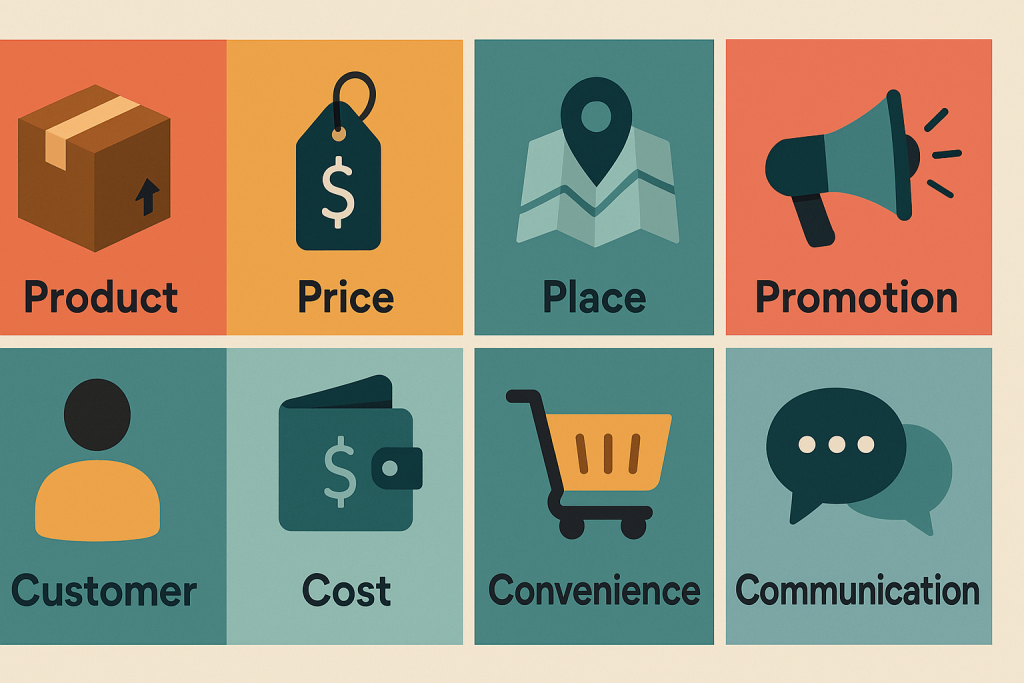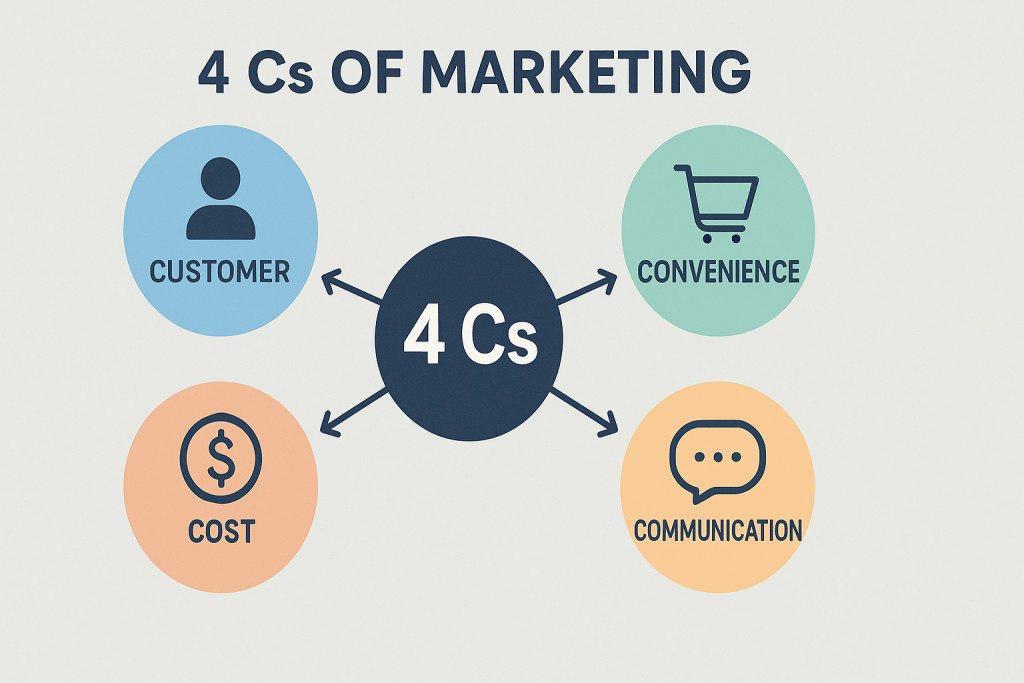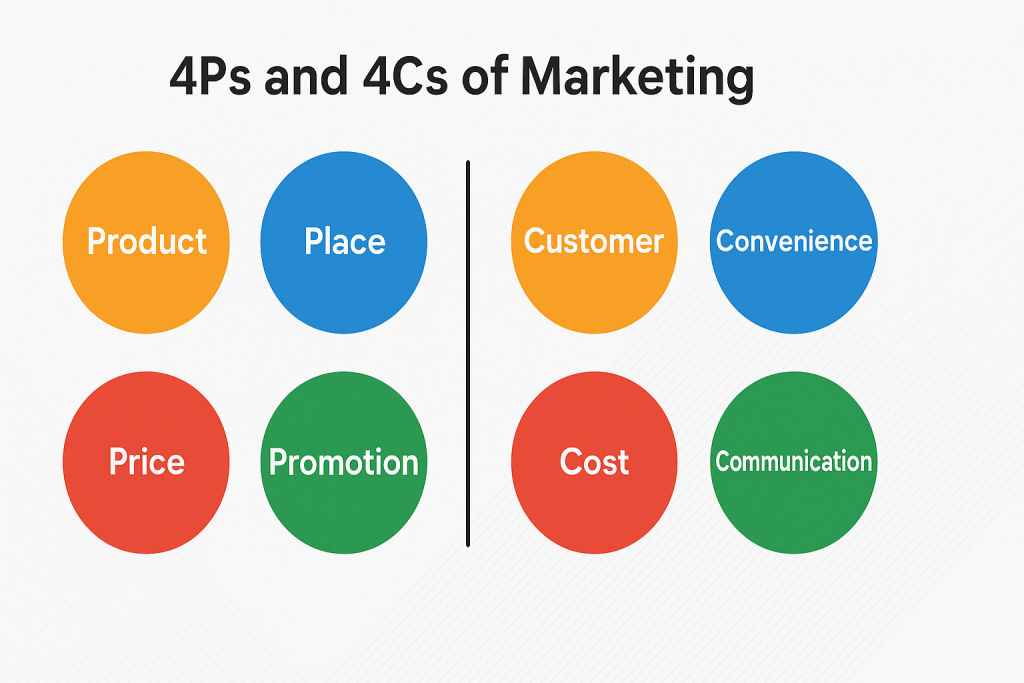Understanding the 4 Cs and 4 Ps of Marketing

Marketing strategies come with a lot of buzzwords and frameworks, but two of the most enduring concepts are the 4 Cs and 4 Ps of Marketing. These two models provide insights into the art and science of attracting customers and building successful brands. If you’re looking to strengthen your marketing strategies, understanding these principles is a great place to start.
This guide will break down the 4 Cs and 4 Ps of marketing, explain how they work together, and explore how you can apply them to boost growth and customer satisfaction.
What are the 4 C’s and 4 Ps of marketing?
What Are the 4 Ps of Marketing?
The 4 Ps represent the cornerstones of traditional marketing, helping businesses bring their products or services to market effectively. They focus primarily on what a company offers and how it delivers value to its customers.
1. Product
At the heart of any marketing strategy is the product or service you’re offering. It doesn’t just refer to the physical product, but also the value it brings to the customer.
- Key Considerations: What are the features, benefits, and unique selling points (USPs) of your product? How does it solve a problem or meet a need for your target audience?
- Example: Apple excels at marketing its iPhones as cutting-edge technology, emphasizing innovation, aesthetics, and seamless integration with other Apple products.
2. Price
Price is how much your customers are willing to pay for the product. It impacts not only revenue but also customer perception of your brand.
- Key Considerations: Are your prices competitive? Do they reflect the value of your product? Will you use premium pricing, discounts, or penetration pricing to attract customers?
- Example: Companies like Zara use competitive pricing to appeal to a mass market, whereas luxury brands like Gucci use premium pricing to reinforce their exclusivity.
3. Place
Place addresses how and where your product is distributed and sold. This includes brick-and-mortar stores, online platforms, or even direct-to-consumer models.
- Key Considerations: Is your product available where your target customers prefer to shop? Do you have the right partnerships and distribution channels?
- Example: Amazon’s dominance in e-commerce stems from its ability to sell virtually any product while delivering convenience and speed.
4. Promotion
Promotion covers all the communication strategies you use to inform, persuade, and engage your target audience. This includes advertising, sales promotions, PR, social media, and more.
- Key Considerations: Are you reaching your audience through the right channels? Does your messaging align with your brand voice and resonate with customers?
- Example: Coca-Cola’s holiday campaigns create emotional connections, making its brand synonymous with celebration and joy.
What Are the 4 Cs of Marketing?

The 4 Cs flip the perspective to focus on the customer rather than the marketer. This customer-centric model helps businesses align their strategies with consumer needs and experiences.
1. Customer
Instead of focusing solely on the product, the 4 Cs model prioritizes understanding the customer’s wants and needs.
- Key Considerations: What problem is the customer trying to solve? How does your product or service fit into their life, enhancing convenience or satisfaction?
- Example: Netflix doesn’t just offer streaming services; it tailors its offerings through personalized recommendations and an easy-to-use interface to match individual tastes.
2. Cost
Cost considers the total expense a customer incurs, not just the price tag. This could include time, effort, or opportunity costs.
- Key Considerations: Do customers feel they’re getting good value for the overall cost they pay? Are you transparent about pricing?
- Example: A high-end gym membership might have a higher price, but if the perceived benefits (e.g., premium equipment, top-notch classes) outweigh the cost, customers are more likely to invest in it.
3. Convenience
Convenience relates to how easy and effortless it is for customers to access and purchase your product or service.
- Key Considerations: Are you minimizing friction in the buying process? Is it easy to find, order, and receive your product through the customer’s preferred channels?
- Example: Starbucks excels in convenience by offering mobile ordering and strategically placed stores for people on the go.
4. Communication
Unlike one-way promotion in the 4 Ps, communication in the 4 Cs emphasizes two-way interaction with customers. It’s about creating a dialogue instead of simply broadcasting a message.
- Key Considerations: Is your audience engaged? Are you actively listening to and addressing their feedback?
- Example: Brands like Glossier thrive by maintaining open communication with customers through social media, collecting feedback to co-create future products.
What is the difference between the 4Ps and 4Cs of marketing?
|
4Ps of Marketing |
4Cs of Marketing |
Focus |
| Product | Customer Needs and Wants | What the business offers vs. what the customer desires |
| Price | Cost | Seller’s price vs. customer’s cost perception |
| Place | Convenience | Where to sell vs. how easy it is for customers to buy |
| Promotion | Communication | Advertising & sales vs. two-way interaction with customers |
How the 4Ps and 4Cs of the Marketing Mix Work Together

While the 4 Cs and 4 Ps of marketing mix may seem like separate marketing models, they’re complementary. The 4 Ps focus on the company’s offerings, while the 4 Cs are centered on the customer’s perspective. A successful marketing strategy takes both approaches into account.
For example, when deciding on product (4 Ps), businesses should start by understanding the customer’s needs (4 Cs). Similarly, setting the price requires analyzing the cost from the consumer’s perspective, including perceived and actual value.
By merging these two frameworks, you can develop comprehensive strategies that balance operational considerations with customer desires.
Steps to Implementing the 4 Cs and 4 Ps of Marketing
Step 1. Define Your Target Audience
Start by deeply understanding your audience’s demographics, pain points, and behaviors.
Step 2. Align Products with Customer Needs
Always ensure that your product or service addresses your customers’ actual challenges or aspirations.
Step 3. Find the Perfect Pricing Sweet Spot
Research your competition, study your customers’ perceived value, and determine what pricing strategy creates the best balance between profitability and customer satisfaction.
Step 4. Simplify Channels of Access
If you want customers to choose you, make access to your products and services as frictionless as possible.
Step 5. Foster Engagement Through Communication
Use a mix of content marketing, social media, email, and personalized messaging to interact with your audience, creating long-term loyalty.
Why a Customer-Centric Approach Wins
The greatest lesson from the marketing model based on the 4Ps and 4Cs of marketing is simple, yet powerful: customers matter most. While traditional marketing models like the 4Ps focus on the product and promotion from the seller’s perspective, integrating the four Cs shifts the focus toward a customer-centric approach. By truly listening to customers, understanding what they value, and prioritizing their overall experience, businesses can build stronger relationships and foster loyalty. This customer-first mindset not only improves satisfaction but also provides a significant competitive edge in today’s crowded marketplace. Adopting the combined insights of the 4Ps and 4Cs marketing model allows companies to create more effective strategies that resonate deeply with their target audience.








